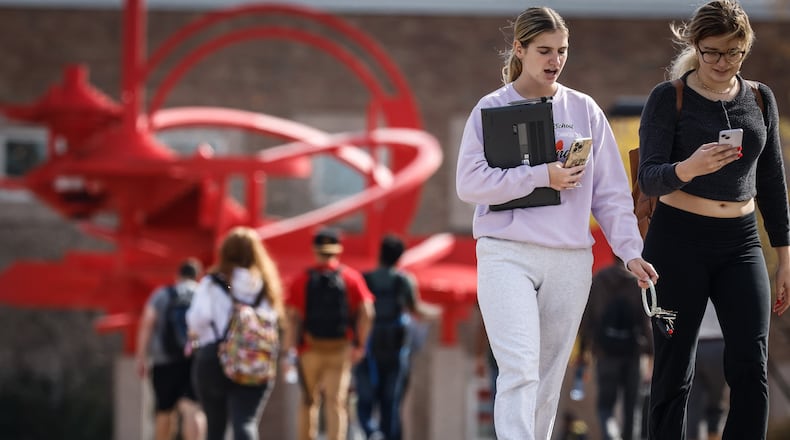Tuition and fees — the costs that students must pay to attend a university, whether they live on campus or not — went up about 4% between fall 2021 and fall 2022 for in-state freshmen at Ohio’s four-year, public institutions, according to Ohio Department of Higher Education data.
That’s less than this year’s historic inflation, which went up about 8.5%, according to the Bureau of Labor Statistics.
There are multiple ways to calculate college costs. The College Board, a national nonprofit, said average tuition costs rose just 1.8% nationally this fall at public, four-year universities. They also cited a 3.5% increase at nonpublic four-year universities and 1.6% at two-year community colleges, without adjusting for inflation.
While that national average change for all students is lower than Ohio’s new-freshman increase, the Ohio Department of Higher Education said Ohio’s tuition guarantee puts students here ahead. While college costs for many students in other states increase each year, Ohio’s four-year public universities have a guarantee that locks in their freshman-level tuition, room, and board cost for four consecutive years.
ODHE spokesman Jeff Robinson cited one set of College Board data showing Ohio as the state with the third-lowest tuition growth rate for four-year public schools from 2005 to 2022.
Robinson cited “the great strides we have made in recent years to hold down the cost of higher education in Ohio.”
According to a Dayton Daily News review of Ohio Department of Higher Education data, the cost of first-year tuition and fees at Ohio public universities went up 24.5% in a eight-year span between fall 2014 and fall 2022.
That’s an exact match for the 24.5% increase in the city-average Consumer Price Index covering the same period according to BLS. Ohio records show that tuition costs were increasing faster than the CPI in the middle of last decade, but now are increasing slower than the index.
Tuition costs vary widely among Ohio’s public universities, from $7,596 for two semesters at Central State University to $17,354 at Miami University for two semesters. Most Ohio public universities, though, charge between $10,000 and $13,000 for a full year of tuition.
On average in Ohio, the cost of on-campus room and board went up 27.1% between fall 2014 and fall 2022, from $9,754 to $12,401 this semester.
College costs continue to rise, even though demand has dropped, as the total number of students enrolled in Ohio colleges has declined.
Fewer students are now coming to Ohio colleges straight out of high school, and universities are seeing older, nontraditional students, according to ODHE.
“With a smaller population of traditional students, Ohio has programs designed to attract nontraditional students or those with some college but no degree,” said Jeff Robinson, spokesman for the Ohio Department of Higher Education.
Robinson said grants and other programs, like College Comeback, can bring students who dropped out of college back to complete a degree, which can also improve Ohio’s workforce.
To combat rising costs of college, ODHE requires all colleges and universities to submit their tuition cost, room and board cost and fees.
The College Board also found the total amount of financial aid awarded to students increased 7% this year after adjusting for inflation. Most of that increase has come from institutional grant aid, the College Board said.
“Another year of historically low increases in public tuition prices is welcome news to students and families, especially when household incomes have remained stagnant,” said Jessica Howell, College Board’s vice president for research.
About the Author


